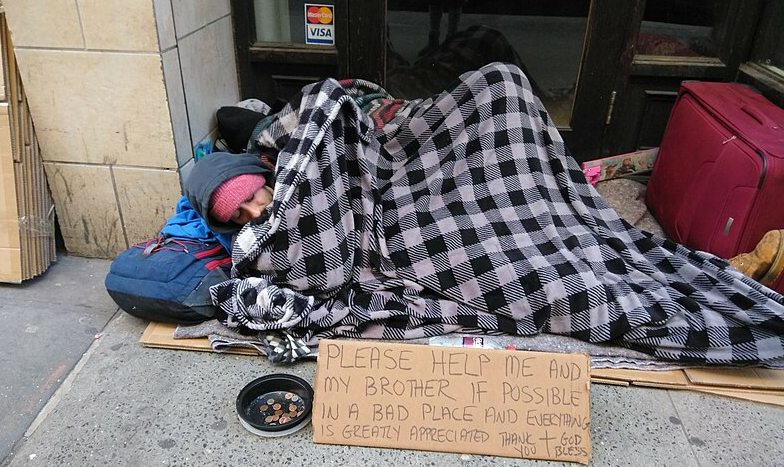As the government further explores bailouts and fixes, it must not forget ordinary working families. After all, in the 1980s, the government spent hundreds of billions of dollars bailing out the savings and loan institutions whose mismanagement caused a national financial crisis.
[No Child Left Behind]
The economic downturn that has rocked our nation over the last few months has been attributed in part to the subprime mortgage crisis.
Its impact on our nation’s biggest mortgage lenders, major banks and Wall Street investment houses with holdings and investments in subprime mortgages has been devastating. Many billions of dollars have been lost as a result of the crisis and the tally continues to soar. This is serious.
A crisis of this magnitude certainly requires a set of remedies commensurate with its significance. Currently, Congress, the White House and the Federal Reserve Board are wrestling with solutions that would buttress major financial institutions. Regrettably, it does not appear that many of these solutions will reach down to the hundreds of thousands of working families facing foreclosures who took out questionable mortgages hoping to secure a piece of the American dream and accumulate some wealth.
Many of them are Black and Latino first-time home buyers. There will be an estimated 2 million mortgage defaults this year, up from 893,000 in 2006. It is terrifying to imagine how many children will be evicted from their homes as a result.
Our national leaders must find ways to help working families who truly need mortgage relief. We must reject the callous view that we should do little to help individuals who have been hurt by the subprime crisis because they voluntarily took out these mortgage loans. That’s neither a fair nor complete picture. Many of them were the victims of predatory and lax lending standards in a largely unregulated industry.
The subprime crisis is a financial disaster from which affected families may not recover for a long time—if ever. Many borrowers took out loans they could not afford. To finance home purchases in recent years, a large number of low- and middle-income families assumed mortgages at high interest rates on risky terms or were convinced to take an adjustable-rate mortgage loan with interest rates that started low but reset two or three years later at substantially higher rates.
The fact that the rates could balloon by 29 to 50 percent was often buried in the fine print. Then they were pressured into refinancing the loans at even higher interest rates. Mortgage brokers and loan originators raked in fat fees from these transactions. Many of these risky loans were refinancing agreements with homeowners who were induced to tap the equity in their homes for ready cash to meet pressing financial obligations, according to the Center on Budget and Policy Priorities. After a foreclosure, they lost all of the invested wealth they had built up in their homes over the years.
From 2003 to 2006, the proportion of all new mortgages with subprime terms grew from 8 percent to 28 percent, according to the Center for Responsible Lending. A disproportionate share of these subprime borrowers is minority. In 2005, by one estimate, 50 percent of all new mortgages made to African American borrowers and 40 percent of those made to Latino borrowers were subprime loans.
The growth of subprime mortgages and poor lending standards (such as the increase in loans granted to families lacking sufficient income when the loans were made), combined with a weakening U.S. economy and a decline in home prices already have led to an explosion of delinquencies and foreclosures. Things will get worse when subprime loans issued in 2006 and 2007 reset, as scheduled, at substantially higher interest rates in 2008 and 2009. The explosion in foreclosures has ravaged families and devastated communities, further driven down property values and left some communities pocked with vacant dwellings.
Also hurt by the crisis have been tenants of multifamily rental dwellings, often owned by speculators. When these properties were foreclosed, it was the tenants who lost their homes.
Although several legislative initiatives are pending in Congress to address the crisis, so far, the federal government has done little to help affected low- and middle-income families. In late 2007 the Bush Administration announced a voluntary agreement with lenders to allow some borrowers with adjustable-rate mortgages to extend the period before which their interest rates reset upward. But that plan is likely to help only a small percentage of subprime borrowers and does nothing for those who have already fallen behind on their payments.
As the government further explores bailouts and fixes, it must not forget ordinary working families. After all, in the 1980s, the government spent hundreds of billions of dollars bailing out the savings and loan institutions whose mismanagement caused a national financial crisis. Hard working families affected by the subprime crisis that play by the rules deserve no less. They must not be turned out of their homes and into financial ruin often with no place to go. That’s not fair.
For more information about the Children’s Defense Fund, go to http://www.childrensdefense.org/.
To comment, to subscribe to or advertise in New York’s leading Pan African weekly investigative newspaper, please call (212) 481-7745 or send a note to
Also visit out sister publications Harlem Business News www.harlembusinessnews.com publications and The Groove Music magazine www.thegroovemag.com
“Speaking Truth To Power.”











